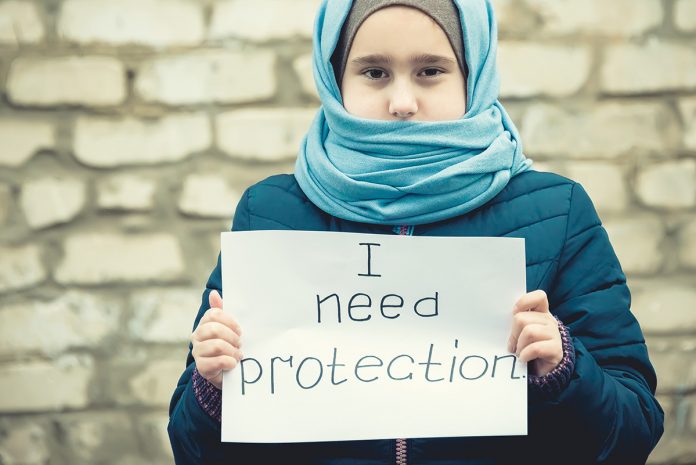Chief Talent & Global Strategy Officer Dr Dianne Morrison-Beedy highlights the major issue of how adolescent girls from refugee backgrounds have been forgotten in evidence-based sexual risk reduction interventions
Diasporic peoples, those who have moved, migrated, or been scattered away from an established or ancestral homeland, include refugees whose migration was sudden and involuntary.(1) In the past decade, over 600,000 refugees have resettled in the U.S. with more than one-half being under the age of 24 years.(2) Similarly, in the past three years alone, three-quarters of a million people have applied for asylum in the EU and nearly 50,000 in the UK alone.(3) Countries across the globe assist refugees whose lives have been shattered by conflict and disaster to survive, recover, and gain control of their future. We know that that the adolescent and emerging adult years are a developmental period critical for acquiring essential life skills and this period is recognised as a stage where peers become a predominant influence on behaviour choices and decision-making. For teens and young adults, there is increased experimentation during this developmental stage with emerging sexual and risk-taking behaviours.(4) With the numbers of refugee teen females entering across the UK, EU, and the U.S., many of whom have had limited to no prior sexual health education, acculturation into society poses a unique, complicated, and often overwhelming challenge, particularly regarding sexual risk reduction choices.(5-7)
The proclivity for risk-taking in adolescents correlates with behaviours impacting HIV/STIs and pregnancy outcomes. These remain major morbidities negatively impacting the health and well-being of youth.(8) Globally, young females still predominate heterosexually acquired HIV cases with 14% of females who acquire HIV between ages 13-23.(9) Alarmingly, HIV-infected teens are least likely to be connected with appropriate care and, thus, unlikely to effectively suppress their viral load.(10) Similarly, although teens account for only one-quarter of sexually active persons, they represent half of all diagnosed sexually transmitted infections (STIs) which increase physiological transmission risk for HIV in females.(11) With the increasing numbers of refugee adolescent and emerging adult females entering communities across the globe, successful and safe transition into society requires HIV-protective and risk-reduction knowledge and skills. Yet this marginalised and often hidden population has been overlooked in evidence-based sexual risk prevention intervention programs addressing these disparities.
Refugee adolescent girls are vulnerable to multiple sexual health morbidities and risk becoming the next wave of HIV infections in the U.S., UK and EU. Concerning is that their lack of related experience and exposure needed to build HIV-preventive knowledge, attitudes, and skills looks similar to the deficits U.S. adolescents had 2-3 decades ago during the early years of the epidemic. Working with refugee populations presents additional challenges for sexual risk reduction intervention implementation as the baseline knowledge and experiences upon which intervention strategies are built are often lacking in this group.(5,7,12) Young refugees often have limited access to sexual health information and resources in their places of resettlement.(6,13) Evidence from multiple recent studies indicates that young refugee attitudes towards sexual health are influenced by cultural and gender norms, and acculturation that ultimately influences educational and social access and understanding.(14-18)
Gender differences in sexual health literacy and accessing services exist across young refugee groups, with females more likely than males to identify shame and embarrassment as major barriers to communication with peers, partners or parents and to seeking services.(5,6,12) Consistent across studies conducted with this population was the lack of adequate sexual and reproductive health knowledge, particularly in females.(6,7,17) For so many, first discussions occurred in the context of an unplanned pregnancy or STI diagnosis.(5,7) Additional studies found that emerging adults, particularly females, were not comfortable discussing sexual health issues with family members or providers and rely on information from other sources such as the internet, parents or peers, and, for a few without disrupted education, to school-based programs.(5,14,16) Focus groups and interviews conducted with 25 refugee men and women ages 18-24 living in the U.S. described barriers to sexual health access, sexual health knowledge, and literacy. Both men and women appeared to have limited knowledge about sexual health and multi-domain barriers to access were identified (e.g., embarrassment, language difficulties, lack of money, insurance and transport).(6) Yet females were highly motivated to participate in sexual health programs that are considered foundational to their empowerment and success.(19) Findings document the need for sexual health education as part of resettlement services and that girls across a broad age range experience these deficits. Moreover, programs need to be tailored independently for men and women to address gender differences and needs. Recommendations for this population include interventions that are interactive, gender-specific, and conducted at commonly frequented sites and services targeted to this population with supportive, knowledgeable staff.(5,6,20) Yet to date, there has been no use or tailoring of evidence-based sexual risk reduction interventions for this group of vulnerable girls.
Health Improvement Project for Teens
The Health Improvement Project for Teens (HIPTEENS) is a gender-tailored, brief, completely manualised intervention recognised by the Centers for Disease Control (CDC) and U.S. Department of Health and Human Services (DHHS) as a strong evidence-based intervention for HIV, STI and pregnancy prevention. HIPTEENS was developed through extensive qualitative and formative work with diverse urban adolescents, those in juvenile justice, sexually active and abstinent teens, and national and international youth.(21-25) Measurements and data collection approaches tailored to adolescents and their risk behaviours, as well as study implementation and logistics, have been continually refined throughout the program.(26-31) These include detailed tracking/retention protocols and staff training manuals.(32) Most recently, universal design for learning (UDL) approaches have been integrated into the intervention for those with intellectual disabilities.(33) Behavioural and theoretical antecedents to behaviour change (e.g., information, motivation, skills) have been improved and noted in the rigorous pilot and full-scale randomised controlled trials (RCTs).(9, 34-38) Last tested in sexually active girls ages 15-19 years in an RCT with 12-month follow up, those in the intervention significantly reduced:
- Total episodes of vaginal sex.
- Acts of unprotected sex.
- Number of sex partners, while significantly increasing sexual abstinence.
In a subsample of medical chart-connected participants, girls participating in the HIPTEENS intervention reduced their pregnancy rates by 50%.(35) HIPTEENS is an easily tailored intervention and is being used across diverse communities and populations, including those from refugee and diasporic backgrounds, foster care, educational settings and health clinics. Building off evidence-based gender-specific interventions, such as HIPTEENS, developed and tested through rigorous science, presents a unique opportunity to combat the HIV, STI and unplanned pregnancy threats that refugee females will likely face upon resettlement.
Click here for references.











